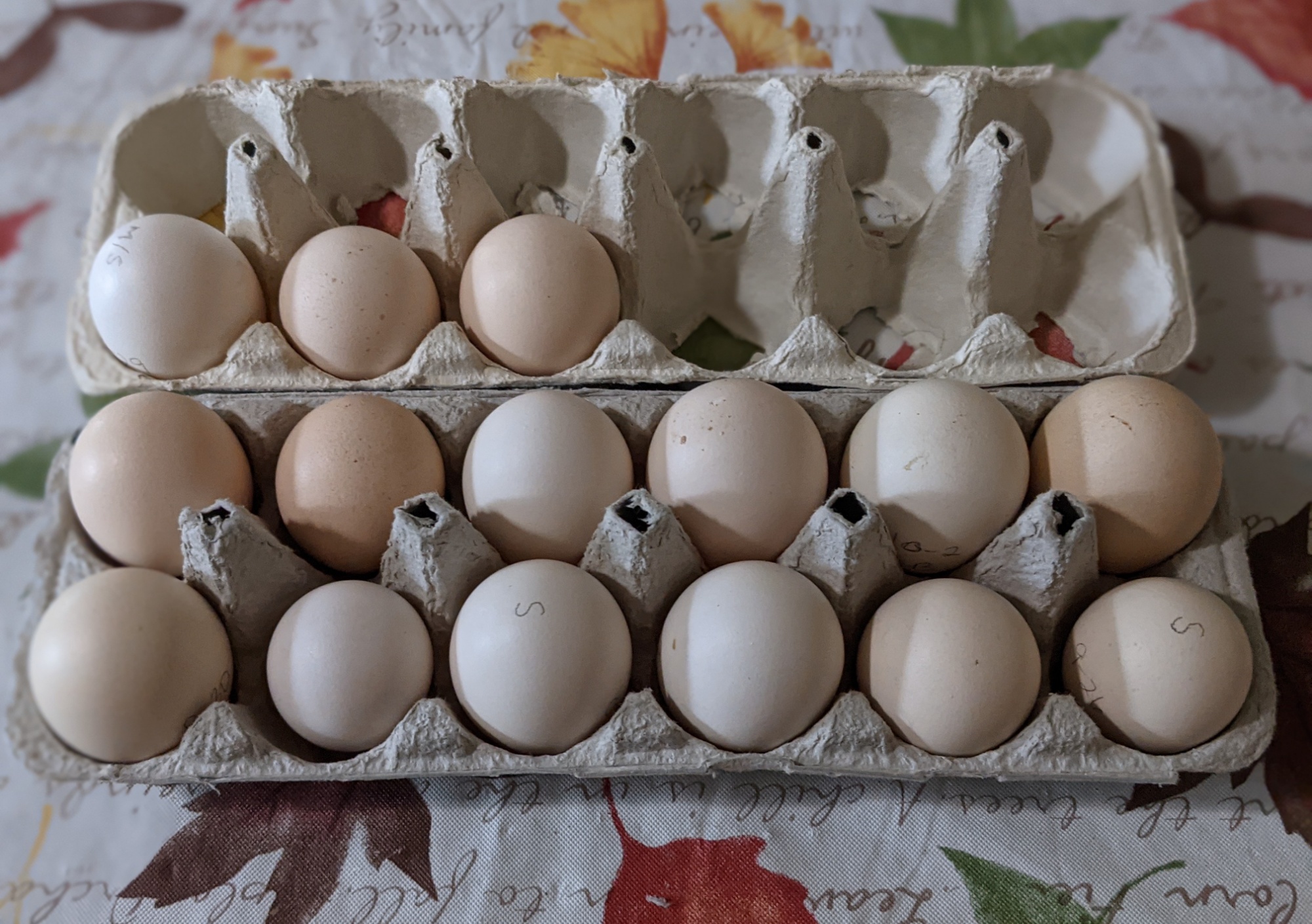
Who’s incubating eggs in October? I am! And they’re shipped eggs, which means – given how slow and unreliable postal service has become – that, at the end of three weeks, there may or may not be chicks. Whether you’re also a hatching fanatic or you just want to live vicariously, follow along to see how the incubation progresses!
After experiencing disastrously poor hatches with shipped eggs over the last couple of years (pretty much since USPS implemented changes that caused slowing of delivery times and increased automation), I now only purchase shipping eggs from breeders relatively near me. In this case, the American Bresse eggs only traveled a little over 200 miles and arrived at its destination after 2 days. The post office that received the package from the seller failed to scan it as “accepted”, so the tracking was basically useless until the package arrived at a regional mail center nearby.
The box was clearly labeled as “hatching eggs” and “fragile” by the sender, and it arrived without noticeable external damage. Hooray! Our post office even took the initiative to hold the eggs at the counter for us (one of the best parts of having a small, rural post office!).
Upon opening the box, I could see that the eggs were wrapped in bubble wrap pouches and nestled into shredded paper. I carefully unwrapped each (a total of 15 – the seller included 3 extras) and put them in a carton with the pointy end down to allow them to settle. Each looked fine to the naked eye, but one had some moisture on the outside of the egg that made me wonder if it was cracked. The seller had also marked each egg with the date collected, and a few were at the 10 day mark when they arrived.
When I candled the eggs, I was pleased to find that there were no cracks. Even the air cells had sustained minimal damage, with just a few air cells misshapen or showing movement. This likely means that the eggs had not been subjected to severe shipping stresses such as shaking and dropping. The less shipping damage, the better the chances of hatching.
After 24 hours upright in a carton, I moved them into the waiting incubator and set them on the automatic turner. Because of the slight damage to the air cells, I chose to wait another 24 hours to start turning, to allow the air cells to try to re-affix themselves.

Though the other hatching eggs (Lavender Ameraucana) I ordered were shipped on the same day, and were traveling about 550 miles from a bordering state, they’re “delayed” now as USPS appears to have misrouted them: instead of traveling east from a contiguous state, USPS shipped the eggs 300 miles north of the origin. (Un)helpfully, USPS tracking shows that the “package is on its way”. ⁉️ When it arrives, who knows? Unfortunately, this doesn’t bode well for the eggs, which are perishable and time-sensitive.
Despite USPS accepting the package bright and early on the morning of 10/4 and providing an estimated delivery date of 10/7, those eggs just left the distribution center in Iowa at 8 a.m. yesterday morning. Realistically, they may not arrive at my local post office until next week*. 😒
The very real risk of this sort of USPS shipping fiasco is one of the reasons I refuse to have live poultry shipped to me – I’ve heard too many horrible stories of baby poultry being misrouted and, as a result, being dead on arrival (remember, they can only survive, at most, for 72 hours on their yolks)…and who knows what temperature changes and rough handling may have occurred? At least with eggs, there’s no risk of living animals suffering because of the shipping conditions. If you’re looking to source poultry (including adults), I strongly encourage you to look locally.
While the American Bresse eggs are looking promising now, it’s too soon to tell if chicks will actually hatch; nonetheless, I’m hoping we see good fertility and that most of the eggs progress to hatching successfully. Keep your fingers crossed!
*Update: after I wrote this post (when the Lavender Ameraucana eggs were still in IA), the eggs actually made it to a distribution center here, and were at my local post office this morning…which means they were flown. Stay tuned for a post soon on the condition of those eggs.
